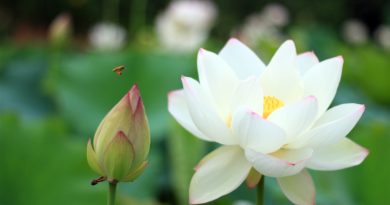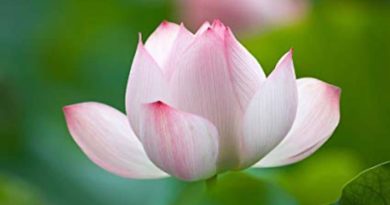THE JHĀNAS AND THE LAY DISCIPLE ACCORDING TO THE PĀLI SUTTAS – PART I: JHĀNA AND THE ATTAINMENT OF STREAM-ENTRY
THE JHĀNAS AND THE LAY DISCIPLE ACCORDING TO THE PĀLI SUTTAS – PART I: JHĀNA AND THE ATTAINMENT OF STREAM-ENTRY
Let us turn directly to the texts themselves to see if they can shed any light on our problem. When we do survey the Nikāyas with this issue in mind we find, perhaps with some astonishment, that they neither lay down a clear stipulation that jhāna is needed to attain stream-entry nor openly assert that jhāna is dispensable. The Sutta Piṭaka mentions four preconditions for reaching the path, called sotāpattiyaṅga, factors of stream-entry, namely: association with superior people (i.e., with the noble ones); listening to the true Dhamma; proper attention; and practice in accordance with the Dhamma.[5] It would seem that all the elements of Buddhist meditative practice, including the jhānas, should come under the fourth factor, but the Nikāyas themselves do not state whether “practice in accordance with the Dhamma” includes the jhānas. The few texts that specify what is actually meant by “practice in accordance with the Dhamma” are invariably concerned with insight meditation. They employ a fixed formula, with variable subjects, to describe a bhikkhu practising in such a way. Two suttas define such practice as aimed at the cessation of the factors of dependent origination (SN II 18, 115); another, as aimed at the cessation of the five aggregates (SN III 163-64); and still another, as aimed at the cessation of the six sense bases (SN IV 141). Of course, meditation practice undertaken to attain the jhānas would have to be included in “practice in accordance with the Dhamma,” but the texts give no ground for inferring that such practice is a prerequisite for reaching stream-entry.
A stream-enterer is endowed with four other qualities, mentioned often in the Sotāpatti-saṃyutta (SN chap. 55). These, too, are called sotāpattiyaṅga, but in a different sense than the former set. These are the factors that qualify a person as a stream-enterer. The first three are “confirmed confidence” (aveccappasāda) in the Buddha, the Dhamma, and the Sangha; the fourth is “the virtues dear to the noble ones,” generally understood to mean inviolable adherence to the Five Precepts. From this, we can reasonably suppose that in the preliminary stage leading up to stream-entry the aspirant will need firm faith in the Three Jewels (the Buddha, the Dhamma, and the Sangha) and scrupulous observance of the Five Precepts. Further, the realization of stream-entry itself is often depicted as a cognitive experience of almost ocular immediacy. It is called the gaining of the eye of the Dhamma (dhammacakkhu-paṭilābha), the breakthrough to the Dhamma (dhammābhisamaya), the penetration of the Dhamma (dhamma-paṭivedha).[6] One who has undergone this experience is said to have “seen the Dhamma, reached the Dhamma, understood the Dhamma, fathomed the Dhamma.”[7] Taken together, both modes of description — by way of the four factors of stream-entry and by way of the event of realization — indicate that the disciple has arrived at stream-entry primarily through insight supported by unwavering faith in the Three Jewels. It is noteworthy that the texts on the realization of stream-entry make no mention of any prior accomplishment in jhāna as a prerequisite for reaching the path. In fact, several texts show the breakthrough to stream-entry as occurring to someone without any prior meditative experience, simply by listening to the Buddha or an enlightened monk give a discourse on the Dhamma.[8]
While the process of “entering the stream” involves both faith and wisdom, individuals differ in their disposition with respect to these two qualities: some are disposed to faith, others to wisdom. This difference is reflected in the division of potential stream-enterers into two types, known as the saddhānusārī or faith-follower and the dhammānusārī or Dhamma-follower. Both have entered “the fixed course of rightness” (sammatta-niyāma), the irreversible path to stream-entry, by attuning their understanding of actuality to the nature of actuality itself, and thus for both insight is the key to entering upon the path. The two types differ, however, in the means by which they generate insight. The faith-follower, as the term implies, does so with faith as the driving force; inspired by faith, he resolves on the ultimate truth and thereby gains the path. The Dhamma-follower is driven by an urge to fathom the true nature of actuality; inspired by this urge, he investigates the teaching and gains the path. When they have known and seen the truth of the Dhamma, they realize the fruit of stream-entry.
Perhaps the most informative source on the difference between these two types is the Okkantika-saṃyutta, where the Buddha shows how they enter upon the fixed course of rightness:
“Bhikkhus, the eye is impermanent, changing, becoming otherwise. So too the ear … nose … tongue … body … mind. One who places faith in these teachings and resolves on them thus is called a faith-follower: he is one who has entered the fixed course of rightness, entered the plane of the superior persons, transcended the plane of the worldlings. He is incapable of doing any deed by reason of which he might be reborn in hell, in the animal realm, or in the sphere of ghosts; he is incapable of passing away without having realized the fruit of stream-entry.
“One for whom these teachings are accepted thus to a sufficient degree by being pondered with wisdom is called a Dhamma-follower: he is one who has entered the fixed course of rightness … (he is) incapable of passing away without having realized the fruit of stream-entry.
“One who knows and sees these teachings thus is called a stream-enterer, no longer bound to the nether world, fixed in destiny, with enlightenment as his destination.”[9]
It is noteworthy that this passage makes no mention of jhāna. While prior experience of jhāna would no doubt help to make the mind a more fit instrument for insight, it is surely significant that jhāna is not mentioned either as an accompaniment of the “entry upon the fixed course of rightness” or as a prerequisite for it.
It might be objected that several other passages on the two candidates for stream-entry implicitly include the jhānas among their meditative equipment. The details of these passages need not concern us here. What is of interest to us is that they assign to both the faith-follower and the Dhamma-follower the five spiritual faculties: faith, energy, mindfulness, concentration, and wisdom.[10] The Indriya-saṃyutta states that the faculty of concentration “is to be seen among the four jhānas,”[11] and a definition of the concentration faculty includes the formula for the jhānas.[12] Thus, if we argue deductively from these ascriptions and definitions, it would seem to follow as a matter of logic that both the Dhamma-follower and the faith-follower possess the jhānas. More broadly, since these faculties and powers belong to all noble disciples, not to monks alone, this might be held up as proof that all noble disciples, monks and lay followers, invariably possess the jhānas.
Such a conclusion would follow if we adopt a literal and deductive approach to the interpretation of the texts, but it is questionable whether such a hermeneutic is always appropriate when dealing with the formulaic definitions employed so often by the Nikāyas. To extract the intended meaning from such schematic definition, we require greater sensitivity to context, sensitivity guided by acquaintance with a wide assortment of relevant texts. Further, if we do opt for the literalist approach, then, since the passage simply inserts the formula for the four jhānas without qualification into the definition of the concentration faculty, we would have to conclude that all noble disciples, monks and lay followers alike, possess all four jhānas, not just one. Even more, they would have to possess the four jhānas already as faith-followers and Dhamma-followers, at the very entry to the path. This, however, seems too generous, and indicates that we need to be cautious in interpreting such formulaic definitions. In the case presently being considered, I would regard the use of the jhāna formula here as a way of showing the most eminent type of concentration to be developed by the noble disciple. I would not take it as a rigid pronouncement that all noble disciples actually possess all four jhānas, or even one of them.
But there is more to be said. When we attend closely to these texts, we see that a degree of flexibility is already built into them. In the analysis of the faculties at SN 48:9-10/V 197-98, the first sutta offers an alternative definition of the faculty of concentration that does not mention the four jhānas, while the following sutta gives both definitions conjointly. The alternative version runs thus: “And what, monks, is the faculty of concentration? Here, monks, a noble disciple gains concentration, gains one-pointedness of mind, having made release the object. This is called the faculty of concentration.”[13]
The Nikāyas themselves nowhere explain exactly what is meant by the concentration gained by “having made release the object” (vossaggārammaṇaṃ karitvā), but they do elsewhere suggest that release (vossagga) is a term for Nibbāna.[14] The Commentary interprets this passage with the aid of the distinction between mundane (lokiya) and supramundane (lokuttara) concentration: the former consists in the form-sphere jhānas (and the access to these jhānas), the latter in the supramundane jhānas concomitant with the supramundane path.[15] On the basis of this distinction, the Commentary explains “the concentration that makes release the object” as the supramundane concentration of the noble path arisen with Nibbāna as object.[16] Thus if we feel obliged to interpret the faculty and power of concentration in the light of the jhāna formula, we might go along with the Commentary in regarding it as the supramundane jhāna pertaining to the supramundane path and fruit.
However, we need not agree with the Commentaries in taking the expression “having made release the object” so literally. We might instead interpret this phrase more loosely as characterizing a concentration aimed at release, that is, directed towards Nibbāna.[17] Then we can understand its referent as the concentration that functions as the basis for insight, both initially in the preparatory phase of practice and later in immediate conjunction with insight. This would allow us to ascribe to the noble disciple a degree of concentration strong enough to qualify as a faculty without compelling us to hold that he must possess jhāna. Perhaps the combined definition of the concentration faculty in SN 48:10 is intended to show that two courses are open to disciples. One is the route emphasizing strong concentration, along which one develops the jhānas as the faculty of concentration; the other is the route emphasizing insight, along which one develops concentration only to the degree needed for insight to arise. This concentration, though falling short of jhāna, could still be described as “concentration that makes release its object.”
The faith-follower and the Dhamma-follower are the lowest members of a sevenfold typology of noble persons mentioned in the Nikāyas as an alternative to the more common scheme of “the four pairs of persons,” the four path-attainers and the realizers of their respective fruits.[18] The seven fall into three groups. At the apex are the arahants, who are distinguished into two types: (i) “both-ways-liberated” arahants (ubhatobhāgavimutta), who gain release from the taints together with deep experience of the formless attainments; and (ii) “wisdom-liberated” arahants (paññāvimutta), who win release from the taints without such experience of the formless attainments. Next are three types in the intermediate range, from stream-enterers up to those on the path to arahantship. These are: (iii) the body-witness (kāyasakkhī), who has partly eliminated the taints and experiences the formless attainments; (iv) the view-attainer (diṭṭhippatta), who does not experience the formless attainments and has partly eliminated the taints, with emphasis on wisdom; and (v) the faith-liberated (saddhāvimutta), who does not experience the formless attainments and has partly eliminated the taints, with emphasis on faith. Any disciple at the six intermediate stages — from stream-enterer to one on the path to arahantship — can fall into any of these three categories; the distinctions among them are not determined by degree of progress but by mode of progress, whether through strong concentration, wisdom, or faith. Finally come the two kinds of anusārī (vi-vii), who are on the path to stream-entry.
What is noteworthy about this list is that samādhi, as a faculty, does not determine a class of its own until after the fruit of stream-entry has been realized. That is, facility in concentration determines a distinct type of disciple among the arahants (as the both-ways-liberated arahant) and among the aspirants for the higher stages (as the body-witness), but not among the aspirants for stream-entry. In this lowest category we have only the faith-follower and the Dhamma-follower, who owe their status to faith and wisdom, respectively, but there is no type corresponding to the body-witness.[19]
From the omission of a class of disciples training for stream-entry who also enjoy the experience of the formless meditations, one might suppose that disciples below the level of stream-entry cannot gain access to the formless attainments. This supposition is not tenable, however, for the texts show that many of tthe ascetics and contemplatives in the Buddha’s day (including his two teachers before his enlightenment) were familiar with the jhānas and formless attainments. Since these attainments are not dependent on the insight made uniquely available through the Buddha’s teaching, the omission of such a class of jhāna-attainers among those on the way to stream-entry must be explained in some other way than by the supposition that such a class does not exist.
I would propose that while disciples prior to stream-entry may or may not possess the formless attainments, skill in this area does not determine a distinct type because powerful concentration is not a governing factor in the attainment of stream-entry. The way to stream-entry certainly requires a degree of concentration sufficient for the “eye of the Dhamma” to arise, but the actual movement from the stage of a worldling to that of a path-attainer is driven by either strong conviction or a probing spirit of inquiry, which respectively determine whether the aspirant is to become a faith-follower or a Dhamma-follower. Once, however, the path has been gained, then one’s degree of accomplishment in concentration determines one’s future mode of progress. If one gains the formless attainments one takes the route of the body-witness, culminating in release as a both-ways-liberated arahant. If one does not attain them, one takes the route of the view-attainer or faith-liberated trainee, culminating in release as a wisdom-liberated arahant. Since these distinctions relate only to the formless attainments and make no mention of the jhānas, it is reasonable to suppose that types (ii), (iv-v), and (vi-vii) may have possession of the form-sphere jhānas. But by making faith and wisdom the key factors in gaining the initial access to the path, this scheme leaves open the possibility that some stream-enterers, and perhaps those at still higher levels, may not have gained these jhānas at all.
Notes:
5. Sappurisasaṃseva, saddhammasavana, yoniso manasikāra, dhammānudhammapaṭipadā. See SN 55:55/V 410-11.
6. Dhammacakkhu-paṭilābha, dhammābhisamaya, dhamma-paṭivedha. See SN II 134-38 for the first two; the third is more a commentarial expression used to explain the second.
7. Diṭṭhadhamma, pattadhamma, viditadhamma, pariyogāḷhadhamma; at e.g. DN I 110, MN I 501, etc.
8. DN I 110, MN I 501, as well as SN III 106, 135, etc.
9. Cakkhuṃ bhikkhave aniccaṃ vipariṇāmiṃ aññathābhāvi. Sotam … mano anicco vipariṇāmī aññathābhāvī. Yo bhikkhave ime dhamme evaṃ saddahati adhimuccati, ayaṃ vuccati saddhānusārī okkanto sammattaniyāmaṃ sappurisabhūmiṃ okkanto vītivatto puthujjanabhūmiṃ. Abhabbo taṃ kammaṃ kātuṃ yaṃ kammaṃ katvā nirayaṃ vā tiracchānayoniṃ vā pettivisayaṃ vā uppajjeyya. Abhabbo ca tāva kālaṃ kātuṃ yāva na sotāpattiphalaṃ sacchikaroti.
Yassa kho bhikkhave ime dhammā evaṃ paññāya mattaso nijjhānaṃ khamanti, ayaṃ vuccati dhammānusārī okkanto sammattaniyāmaṃ … Abhabbo ca tāva kālaṃ kātuṃ yāva na sotāpattiphalaṃ sacchikaroti. Yo bhikkhave ime dhamme evaṃ jānāti evaṃ passati, ayaṃ vuccati sotāpanno avinipātadhammo niyato sambodhiparāyano.
10. E.g., MN I 479, SN V 200-2. SN V 379 ascribes the five faculties to two types of persons who, though the terms are not used, are clearly identifiable as the dhammānusārī and saddhānusārī.
11. SN 48:8/V 196: catusu jhānesu, ettha samādhindriyaṃ daṭṭhabbaṃ. See too AN 5:15/III 12, where it is said that the power of concentration (samādhibala) “is to be seen among the four jhānas.”
12. At SN 48:10/V 198, the faculty of concentration is defined by the formula for the four jhānas. At AN 5:14/III 11, the power of concentation (samādhibala) is similarly defined.
13. Katama’ ca bhikkhave samādhindriyaṃ? Idha bhikkhave ariyasāvako vossaggārammaṇaṃ karitvā labhati samādhiṃ labhati cittassa ekaggataṃ. Idaṃ bhikkhave samādhindriyaṃ.
14. Throughout the Magga-saṃyutta, the expression vossagga-pariṇāmi, “maturing in release,” is used to describe the factors of the Noble Eightfold Path. This suggests that vossagga, as the goal of the path, is Nibbāna.
15. Below I will elaborate on the distinction between the form-sphere and supramundane jhānas.
16. Spk III 234, commenting on SN 48:9.
17. Pṭs III 586-87 seems to take this tack in commenting on the expression thus: “Having as object release: here release is Nibbāna, for Nibbāna is called release because it is the releasing of the conditioned, its relinquishment. Insight and the phenomena associated with it have Nibbāna as object, Nibbāna as support, because they are established on Nibbāna as their support in the sense of slanting towards it by way of inclination. Concentration is nondistraction distinguished into access and absorption (upacārappanābhedo avikkhepo), consisting in the one-pointedness of mind aroused by being established on Nibbāna, with that as cause by taking as object release of the phenomena produced therein. Concentration partaking of penetration (nibbedhabhāgiyo samādhi), aroused subsequent to insight, is described.” From this, it seems that “concentration having release as its object” can be understood as a concentration aroused through the practice of insight meditation, aiming at the attainment of Nibbāna.
18. The fullest discussion of this sevenfold typology is at MN I 477-79. The seven types are also defined, somewhat differently, at Pp 14-15.
19. One possible exception to this statement is a curious sutta, AN 7:53/ IV 78. Here the Buddha begins by discussing the first six types, of which the first two are said to be “without residue” (anupādisesa), i.e., of defilements, which means that they are arahants; the next four are said to be “with residue” (sa-upādisesa), meaning they have some defilements and thus are not yet arahants. But in the seventh position, where we would expect to find the saddhānusārī, he inserts instead “the seventh type, the person who dwells in the signless” (sattamaṃ animittavihāriṃ puggalaṃ). This is explained as “a monk who, through non-attention to all signs, enters and dwells in the signless mental concentration” (bhikkhu sabbanimittānaṃ amanasikārā animittaṃ cetosamādhiṃ upasampajja viharati). This assertion seems to open up, as an alternative to the faith-follower, a class of aspirants for stream-entry who specialize in concentration. But this passage is unique in the Nikāyas and has not formed the basis for an alternative system of classification. Moreover, the commentary explains the “signless mental concentration” to be “strong insight concentration” (balava-vipassanā-samādhi), so called because it removes the signs of permanence, pleasure, and selfhood. (See Mp IV 40 PTS ed.; II 720 SHB ed.) Thus it is questionable whether even the recognition of this type means that samatha concentration determines a class of disciple on the path to stream-entry.








